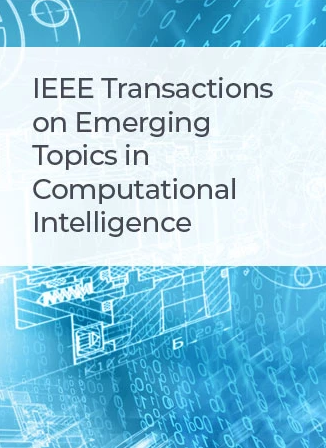通过变换器和边界感知进行低对比医学图像分割
IF 5.3
3区 计算机科学
Q1 COMPUTER SCIENCE, ARTIFICIAL INTELLIGENCE
IEEE Transactions on Emerging Topics in Computational Intelligence
Pub Date : 2024-04-19
DOI:10.1109/TETCI.2024.3353624
引用次数: 0
摘要
低对比度医学图像分割是一项具有挑战性的任务,需要充分利用局部细节和全局背景。然而,现有的卷积神经网络(CNN)由于感受野和局部权重共享有限,无法充分利用全局信息。另一方面,变换器能有效地建立长程依赖关系,但缺乏对局部细节建模的理想特性。本文提出的变换器嵌入边界感知网络(TBNet)结合了变换器和卷积的优势,可用于低对比度医学图像分割。首先,变换器嵌入模块在低层使用卷积来模拟局部细节,在高层使用增强变换器(ETR)来捕捉长距离依赖关系。该模块可以提取具有语义背景的稳健特征,从而在低对比度条件下推断出可能的目标位置和基本结构。其次,我们利用解耦体边缘分支来促进一般特征学习,并预设精确的边界位置。ETR 在整个特征图范围内建立了长程依赖关系,并通过引入局部信息得到增强。我们以并行模式实现它,即多头自注意组捕捉全局关系,卷积组保留局部细节。在角膜内皮细胞、睫状体和肾脏的分割任务中,我们将 TBNet 与其他最先进的(SOTA)方法进行了比较。TBNet 提高了分割性能,证明了它的有效性和鲁棒性。本文章由计算机程序翻译,如有差异,请以英文原文为准。
Low-Contrast Medical Image Segmentation via Transformer and Boundary Perception
Low-contrast medical image segmentation is a challenging task that requires full use of local details and global context. However, existing convolutional neural networks (CNNs) cannot fully exploit global information due to limited receptive fields and local weight sharing. On the other hand, the transformer effectively establishes long-range dependencies but lacks desirable properties for modeling local details. This paper proposes a Transformer-embedded Boundary perception Network (TBNet) that combines the advantages of transformer and convolution for low-contrast medical image segmentation. Firstly, the transformer-embedded module uses convolution at the low-level layer to model local details and uses the Enhanced TRansformer (ETR) to capture long-range dependencies at the high-level layer. This module can extract robust features with semantic contexts to infer the possible target location and basic structure in low-contrast conditions. Secondly, we utilize the decoupled body-edge branch to promote general feature learning and precept precise boundary locations. The ETR establishes long-range dependencies across the whole feature map range and is enhanced by introducing local information. We implement it in a parallel mode, i.e., the group of self-attention with multi-head captures the global relationship, and the group of convolution retains local details. We compare TBNet with other state-of-the-art (SOTA) methods on the cornea endothelial cell, ciliary body, and kidney segmentation tasks. The TBNet improves segmentation performance, proving its effectiveness and robustness.
求助全文
通过发布文献求助,成功后即可免费获取论文全文。
去求助
来源期刊

IEEE Transactions on Emerging Topics in Computational Intelligence
Mathematics-Control and Optimization
CiteScore
10.30
自引率
7.50%
发文量
147
期刊介绍:
The IEEE Transactions on Emerging Topics in Computational Intelligence (TETCI) publishes original articles on emerging aspects of computational intelligence, including theory, applications, and surveys.
TETCI is an electronics only publication. TETCI publishes six issues per year.
Authors are encouraged to submit manuscripts in any emerging topic in computational intelligence, especially nature-inspired computing topics not covered by other IEEE Computational Intelligence Society journals. A few such illustrative examples are glial cell networks, computational neuroscience, Brain Computer Interface, ambient intelligence, non-fuzzy computing with words, artificial life, cultural learning, artificial endocrine networks, social reasoning, artificial hormone networks, computational intelligence for the IoT and Smart-X technologies.
 求助内容:
求助内容: 应助结果提醒方式:
应助结果提醒方式:


